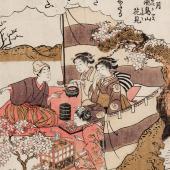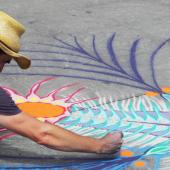Calligraphy
The heyday of calligraphy was in the Middle Ages. That time there was a great demand for bible copies in which the letters had to be perfectly calligraphed. Calligraphy ever since represents an independent art style. In this article, I specifically deal with Western calligraphy, which is used as calligraphy in Latin, Greek or Cyrillic letters.
Traditional writing instruments in ancient times were papyrus rolls, pipe feathers and bird feathers up to the Middle Ages. That time the brush as a writing instrument was rarely used. There were golden letterings or elaborate initials as exceptions. With a sharp knife, the calligraphers pointed their feathers repeatedly. This was often necessary because the quills dulled quickly or they frazzled. The sharp knives was yet used otherwise: For repairing small defects. Since the former parchment was very resistant, the draughtsman simply scraped the appropriate zones away.
Nowadays, for example, goose feathers are only used for very fine lines. Bird feathers were replaced by steel feathers. These modern wide or band pull-springs have a small ink tank on the top, which allows writing more words in succession. As yesterday so today one rarely takes a brush. Only if the font is to obtain a specific character, modern calligraphers construct scripture with ruler and pencil.
After the invention of printing by Johann Gutenberg in the 15th century, handwritten and hand-decorated books increasingly lost importance. Through the new technology, due to the cost-effective production the painted and illuminated pages lost beauty. At the end of the 19th century the British „Arts and Craft Movement“ then rediscovered calligraphy. This group of painters, architects and other artists studied the correlation in between art, society and work. In the age of machine production, they sought after a return to the craft.
The handwritten forms of communication have become very rare. Oftentimes special events such as the addressing of wedding invitations still activate people to calligraph. Computer, e-mail, telephone and mobile phone help that not that many beautifully written manuscripts will be exhibited in the archives of museums in the future. However, scientists doubt that writing by hand is completely lost in the near future. Calligraphy often remains as a hobby for many people. In the days of automatic writing, by focusing on the text and on the work with the pen many calligraphers develop a particularly meditative touch. A quote from Andreas Schenk applies it to the point: "The silence of this work fills the whole being with a comprehensive satisfaction, where time and space, for a short time wiped away, we no longer care to burden."




